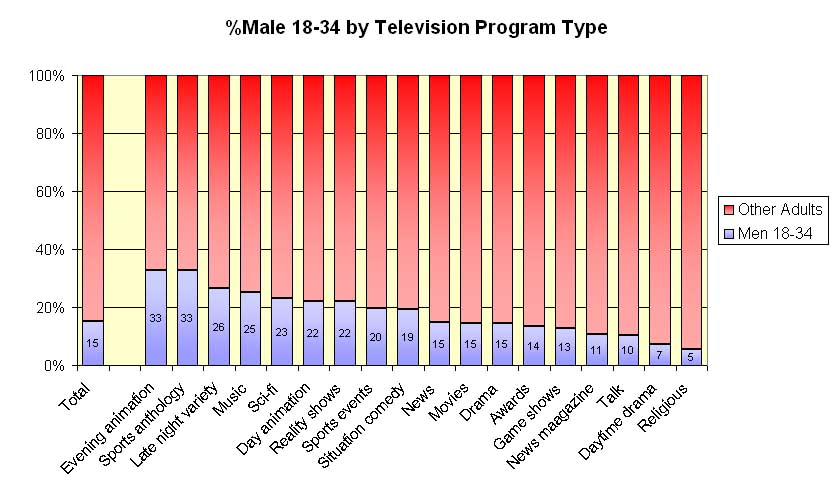
The Missing Young Men
A major research problem in the United States media industry has been the 'missing young men'. Beginning with the fall TV season, viewership among men 18-34 as measured by Nielsen Media Research was falling compared to the previous year. Since this was a highly desirable target group, advertisers and programmers were extremely concerned. There does not appear to be any major problems with the reserach methodology and execution, and so this has led to speculation about whether there has been a societal shift. It is asserted that this generation of young men are no longer interested in passive television viewing, as they are increasing being drawn to the Internet.
Here is the New York Times article by John Schwartz:
Note to the television networks: Pete Brandel is not missing. He's right here, but, like a lot of other men in their 20s, he is just not watching as much TV. Brandel, a 24-year-old realtor in Chicago, says that these days, he looks to the Internet for news and entertainment. Television, he says, is bogged down by commercials and teasers that waste his time. "I'll go to the Comedy Central Web site and download David Chappelle clips rather than wait to see them on TV," he said. "Where I spend most of my time is e-mailing."The television industry was shaken last October when the latest ratings survey from Nielsen Media Research company showed that a huge proportion of a highly prized slice of the American population was watching less or had dropped out of watching TV. As the new television season began, viewership among men between the ages of 18 and 34 fell 12 percent compared with the year before, Nielsen reported. For the youngest group of adult men, those 18 to 24, the decline was an even steeper 20 percent. In a world where fortunes are made and lost over fractions of audience share, the Nielsen announcement came as shattering news. At the time, television executives disputed the figures, and NBC blamed the change on a shift in Nielsen's methodology.
But those who track the uses of technology say that the shift in viewership made perfect sense. The Nielsen report, even if possibly overstated, was confirmation of something that has been going on for a while. The so-called missing men might be more aptly called the missing guys, and they are doing what guys do: playing games, obsessing over sports and girls and hanging out with buddies - often online. And the evidence is accumulating that the behavior of guys like Brandel is changing faster than once thought. The rapid expansion of high-speed Internet access allows the computer to become the video jukebox that Brandel uses to watch comedy clips. The seemingly inexhaustible appetite for computer games, DVD players, music and video file sharing - and, yes, online pornography - all contribute to the trend, these experts say.
We will now refer to some survey results from the 2004 MARS study. This is a mail survey of 21,054 adults in the United States conducted during the first quarter of 2004. We begin by looking at the overall media usage characteristics.
In summary, men 18-34 read less, watch about the same amount of television and listen to radio and use the Internet a lot more than the total adult population. As we are only looking at a single point in time, we cannot address the question of changes over time (i.e. compared to last year).
In media planning, the situation is often one in which the target group has unique characteristics that are different from the rest of the population The attractiveness of young men is that they are heavy consumers of certain products, including media. It is therefore important to find those media that are efficient and effective in reach them. The next chart shows the percentage of men 18-34 within a list of television program types. If they have no preferences one way or the other, we should see everything around the population incidence of 15%. As it stands, there are certain program types that have many more of them while other program types have a lot fewer. The question of the missing young men may have to do with the quality and quantity of television progarms that appeal to them, and this can by no means be assumed to be constant over time.

In the next chart below, we show the same situation for internet usage. Among the population of all internet users, 19% are men 18-34 (note: higher than the 15% of men 18-34 among all adults). Then we show the percentage of men 18-34 among users of various Internet applications. Again, if they had no preferences one way or the other, we should see everything around the overall incidence of 19%. As it stands, most of the applications were significantly higher than the average. On an informal basis, there would appear to be much more for men 18-34 to like on the Internet than on television (and we didn't even ask about pornography and gambling!).

(posted by Roland Soong, 5/13/2004)
(Return to Zona Latina's Home Page)